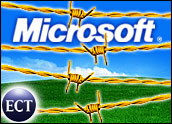
HP released its first mid-level Unix-based blade server, which will allow companies to more cost-efficiently consolidate their legacy systems.
The HP Integrity BL870c, which is the latest HP BladeSystem server, uses a specifically engineered Intel Itanium processor to power the its four-socket server that doubles its processing and memory capabilities. The blade server, which costs US$8,000, will allow companies with legacy Unix technologies to more easily consolidate and virtualize their IT departments.
HP Embraces Unix
The move is a significant upgrade for HP in the Unix blade server arena. Until now, the company has simply dipped its toe in the Unix market, James Staten, an analyst with Boston-based Forrester Research, told TechNewsWorld.
The new system, though, gives the 30 percent of all large enterprise businesses that use some legacy HP-Unix software a viable alternative to porting all their data into a new system. That choice is important, said Staten, because most companies are looking for ways to save money through consolidation and virtualization.
In fact, HP is banking on the coming data center overhaul to drive business towards its Unix products.
“As products become denser and blade enclosures become pervasive, I foresee a majority of the entry to the mid-tier Unix servers will be based on blade technology,” said Jim VanderMey, vice president of technical operations.
The Data Center Dilemma
Companies are beginning to move from a distributed data center to a consolidated — and virtualized — network, which means space and cooling issues will increasingly become important issues.
Blade servers offer a simple, clean solution to those two problems. Blade servers are functioning computers that lack components such as storage — which is important for personal computing. The reason: power consumption and space issues. The fewer working parts, the smaller and cooler those parts can be.
With blade servers, the traditional computing functions are done either through virtualized machines or a separate computing rack. Unfortunately for many companies, blade servers weren’t powerful enough — or optimized with the right software — for all of their needs.
Unix-based blade servers, for instance, were severely limited in their functionality, which caused a significant problem for businesses looking to upgrade their systems, said Staten. According to Forrester Research, 85 percent of all enterprise companies said they would be upgrading — and consolidating — their systems within the next 12 months.
That left IT managers with a serious headache: either live with the current distributed data structure or completely switch technologies. The BL870c at least gives IT managers an option to continue using their current architecture, instead of upgrading to a new system.
“The blade platform has really matured in large measure because of the Itanium processor,” said Staten. “To give these Unix shops the ability to put mission-critical workloads on blades is the most cost-efficient solution for mid-level companies to upgrade their systems.”





















































